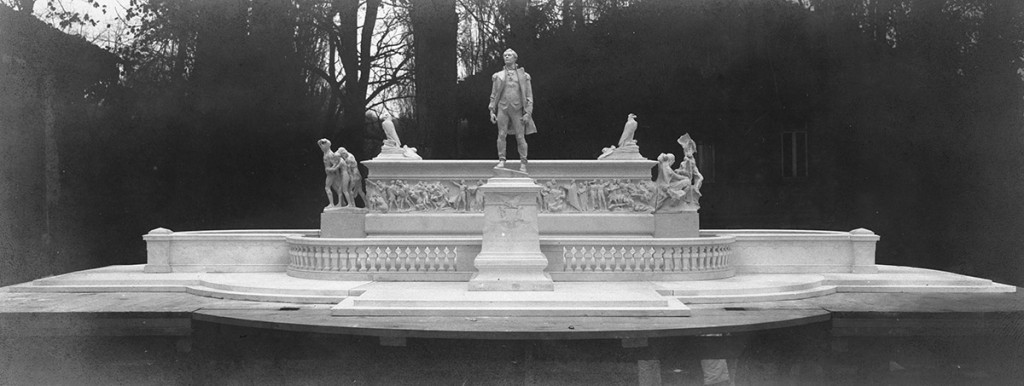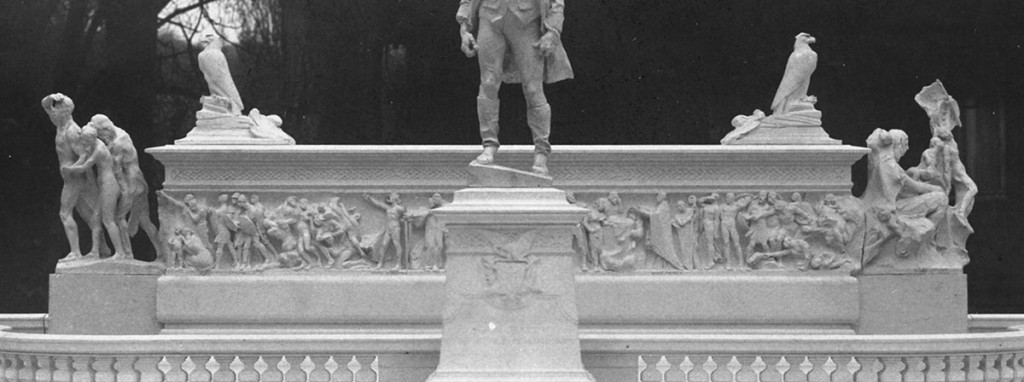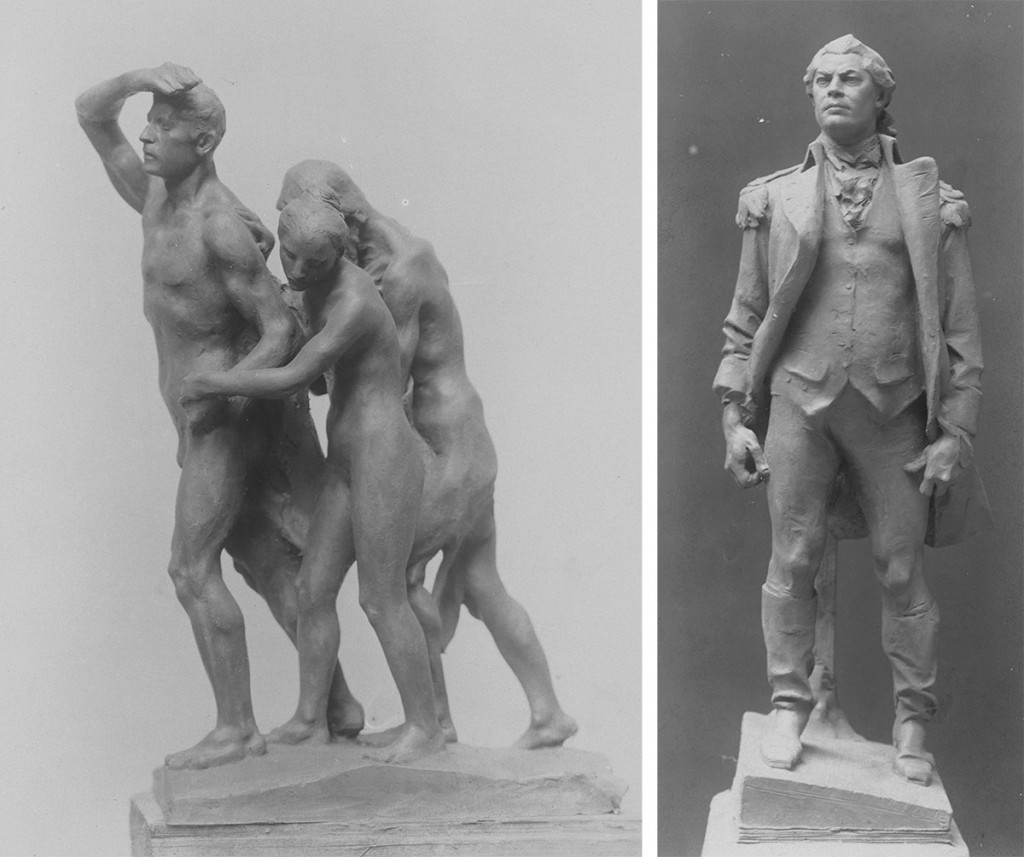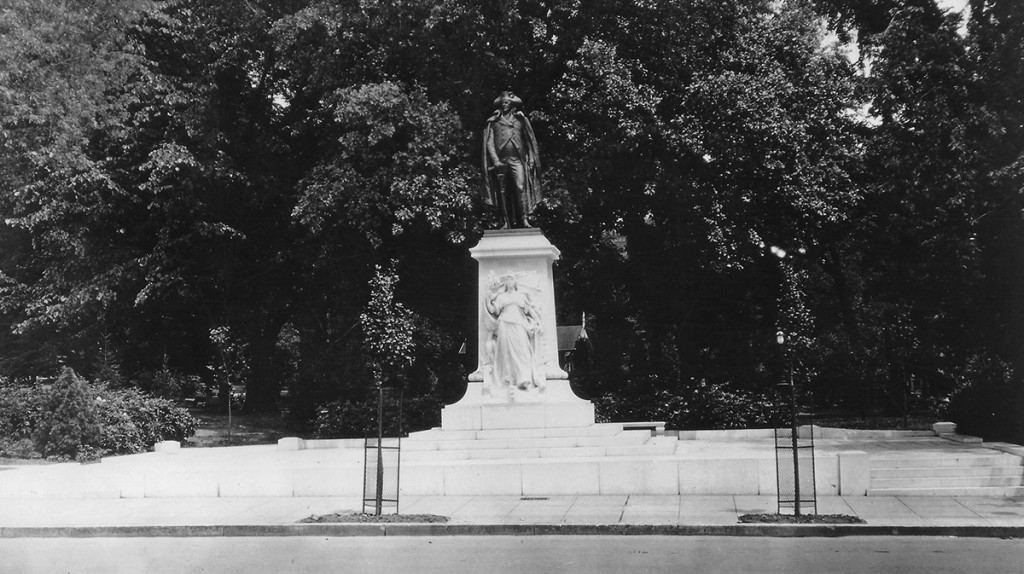In 1906, an alliance of Irish-American groups decided they wanted a monument that would assert their participation in the founding myth of the United States. This had been denied; before 1700, the principal means of Irish immigration was through indentured servitude. The Irish, upwardly mobile and increasingly tired of their second-class ethnic status, were making a bid to become White.
The Ancient Order of Hibernians, a friendly society, saw the Revolutionary War naval hero John Barry as precisely the man to plug into the American foundation myth. The French had done it with Rochambeau and Lafayette. The Poles would do the same with Kościuszko, and the Germans with von Steuben.
The Hibernians wanted the best, so they courted the judgement of stars: Daniel Burnham, Frank Millet, and Herbert Adams, among others. They had no idea what they were getting.

The jury’s eyes smiled upon an Irish-American devotee of Rodin, Andrew O’Connor. From Paris, he contrasted a naturalistic portrait of Barry with impressionistic depictions of Irish history. A freestanding personification of Ireland blends into a low relief depicting Irish history. After St. Patrick, the frieze turns quickly toward English oppression, until it terminates in tormented nudes looking west across the ocean to a new life. (R-L)
Situating Barry in a narrative of British violence was wildly unconventional, but completely accurate. Protestant landowners expropriated the Barry family farm when John was a child, casting him into abject poverty. He was at sea by 14.
The statue of Barry is tough, if not butch. He’s leaning into the deck of a rocking of a ship, staring at a threat unseen. O’Connor exaggerated his hands and face to realize a psychological intensity that is present in only a few monumental sculptures in DC, Lincoln, Grant and Adams.
As far as I know, only the Eisenhower Memorial combines freestanding portraiture in front of bas-relief sculptures in a way that comes close to O’Connor’s layering. The flickering of a radical direction for traditional sculpture appealed to artists steeped in psychology and modern philosophy but made enemies of Washington elites and populist conservatives.
The Hibernians balked at what they saw as a reification of hot-tempered Papist carnality. It’s an altar behind a rail, for God’s sake! And all that affliction was just so terribly 1545. It wasn’t hard for the groups to push the stereotype further and see the statue of Barry as little more than a Bowery thug in Colonial duds. And those eagles…
This was no way to court the graces of Anglo-Saxon propriety.
The Hibernians wanted a statue that would include one of their own into the genteel pedigree of the memorial landscape. Looking around, that seemed to be mostly men in Classical repose with bald assertions of greatness. All this emphasis on misfortune and victimization was effete nonsense.
Controversy over the design went on for three years. A number of Beaux-arts sculptors and Architects spoke out in favor of the design. In the end, the Hibernians reminded President Taft of their voting power, so he issued a rejection on June 1st, 1909. The replacement is a competent statue by John Boyle, with an aristocratic Commodore and a vacant female allegorical figure.
Like so many competitions, the winner judged by peers was brushed aside by the actual power behind it. After having a contest to make it look open and democratic, they put up whatever they actually wanted.
As one might expect, the appeal to respectability didn’t work. At the dedication in 1914, Woodrow Wilson sniped at “Americans with hyphens” who wanted respect without shedding their identities.
Franklin Square, which seemed so promising at the time, never became a memorial ground like Lafayette Park. It never worked as a city park, either. Attention shifted elsewhere, leaving Barry adrift and alone.
Images: O’Connor design courtesy Kirk Savage / NARA, Boyle design courtesy the CFA.



